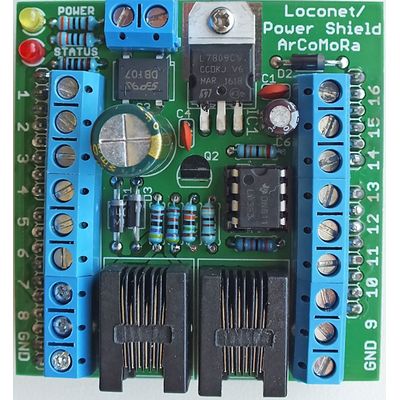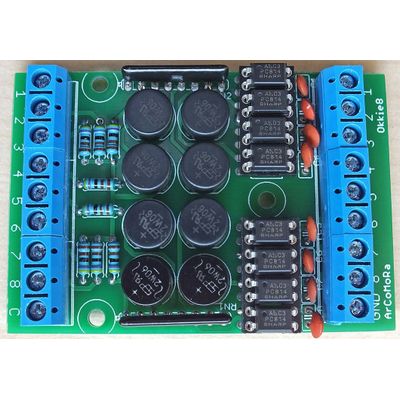Model railway hobby friend Nico Teering has taken the Arduino software for DCC accessory- and servodecoder and occupancy detection a step further, by adding a ‘shell’ that performs the configuration of all parameters like DCC addresses, Arduino pins, servo-tuning and accessory modes via the serial interface.
This effectively means you can configure your Arduino to do exactly what you want it to do via the PC, connecting it to the Arduino via a USB cable. No more tinkering in the Arduino code is needed … all can be done uploading the code once to your Arduino (using the Arduino IDE) and configuring your parameters via a user interface on your PC screen.
All this has been available for a while now and is already used by many Dutch railway enthusiasts. The good news is that an English user manual has just been made available.
Visit Nico’s website to download the free software and the user manuals.
Software is available for:
– a DCC servo- and accessory decoder, also capable of electrofrog switching
– a DCC signal decoder that allows you to configure prototypical railway signalling
– an occupancy detection encoder that communicates via Loconet
Furthermore, a DCC hardware shield is available that contains the DCC to 5V opto-coupler circuit as well as screw terminals to connect your servo’s and accessories. For the occupancy detection a Loconet shield is available, as well as an 8 channel current sensing board. Nico told me he will ship to countries outside the Netherlands at just the cost of materials plus shipping.



Hi, based on your post, I purchased the loconet board. I was getting an error when trying to load his Arduino software and after doing some googling, installed the older version of Arduino IDE 1.06 and that worked. After setting up the devices address, I am able to ground the inputs and see the loconet traffic in a loconet window on JMRI.
As you mentioned. The price of this board and an Arduino Uno is quite reasonable. Thanks.
BTW, I am also using Team Digital’s CSCe, SIC24e and SRC162e loconet boards as they allow a complex combination of inputs and outputs to be configured using JMRI.
LikeLike
Posted by diehard | April 5, 2018, 14:12Hi Diehard,
First of all: why do you not react on the site of the author: arcomora.wordpress.com? Or send me a mail directly.
May be you did that but I don’t recognize the name Diehard.
You don’t explain what error(s) occured when loading the software. Why do you need the Arduino IDE?
That should not be required.
But after all you’ve got it working? There are more users with JMRI. Perhaps you can tell on arcomora.wordpress.com how you did it.
Nico Teering
LikeLike
Posted by nteering | April 6, 2018, 07:56Hallo Ruud,
I tried the Mardec Software today. Everything is going well, until Mardec Software has been installed to Arduino, then I always get the notice that ” installation has failed”.
Opposite to this, Arsidec Software is no problem and works.
When I have loaded Arsitec and want to laod Mardec to that Arduino, Software opens the Arsidec mask, but on Top there is written Mardec.
Can you help me?
Do others have same problem?
Best regards from Germany
Carl
LikeLike
Posted by Carl Jaeger | October 1, 2017, 16:13After installation on your PC, there are two icons to start MARDEC. One is to be used only the first time, it will install the software on the Arduino. The other icon, I think it is called ‘MARDEC Configuration’ is the one to use when connecting to an Arduino that already has the MARDEC software on board. Maybe that is the issue? If not, best contact Nico directly via the contact form on his website.
LikeLike
Posted by RudyB | October 1, 2017, 16:26what new in railroad & co version 9
LikeLike
Posted by mike yates | October 1, 2017, 12:53